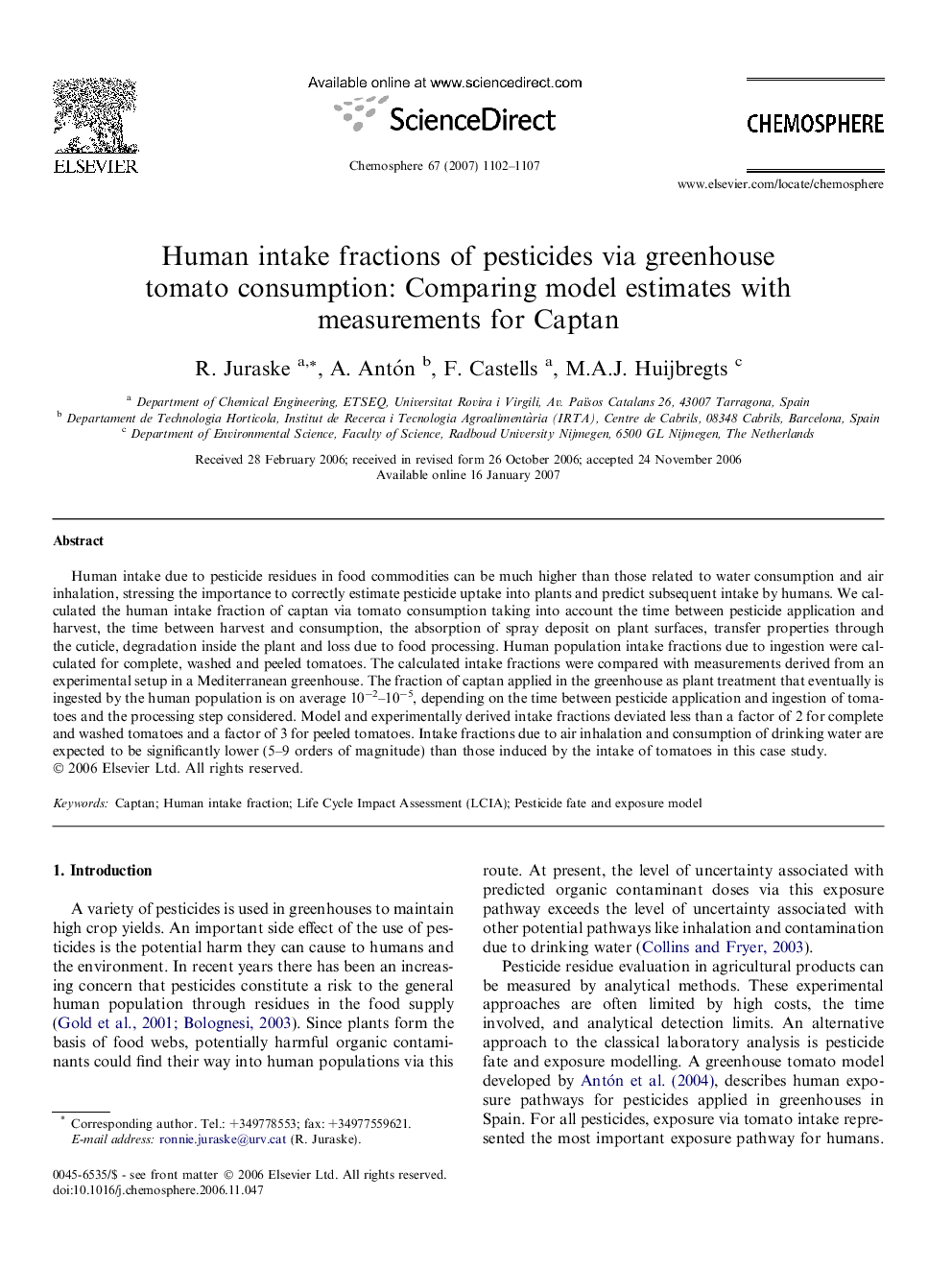| Article ID | Journal | Published Year | Pages | File Type |
|---|---|---|---|---|
| 4415378 | Chemosphere | 2007 | 6 Pages |
Human intake due to pesticide residues in food commodities can be much higher than those related to water consumption and air inhalation, stressing the importance to correctly estimate pesticide uptake into plants and predict subsequent intake by humans. We calculated the human intake fraction of captan via tomato consumption taking into account the time between pesticide application and harvest, the time between harvest and consumption, the absorption of spray deposit on plant surfaces, transfer properties through the cuticle, degradation inside the plant and loss due to food processing. Human population intake fractions due to ingestion were calculated for complete, washed and peeled tomatoes. The calculated intake fractions were compared with measurements derived from an experimental setup in a Mediterranean greenhouse. The fraction of captan applied in the greenhouse as plant treatment that eventually is ingested by the human population is on average 10−2–10−5, depending on the time between pesticide application and ingestion of tomatoes and the processing step considered. Model and experimentally derived intake fractions deviated less than a factor of 2 for complete and washed tomatoes and a factor of 3 for peeled tomatoes. Intake fractions due to air inhalation and consumption of drinking water are expected to be significantly lower (5–9 orders of magnitude) than those induced by the intake of tomatoes in this case study.
